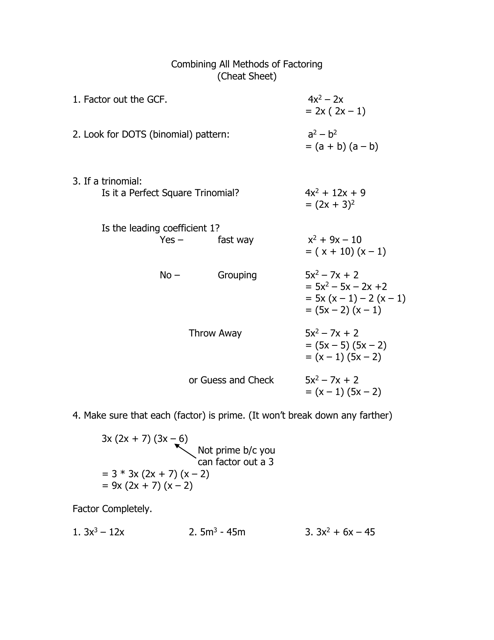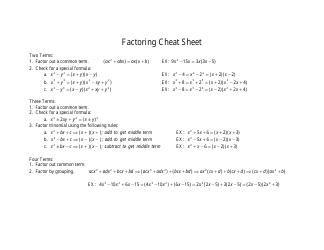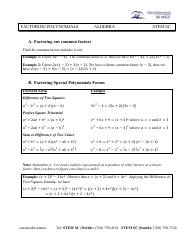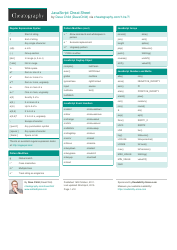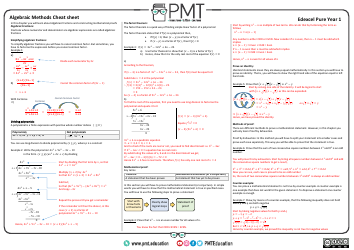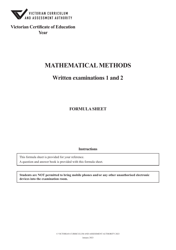Factoring Cheat Sheet - Combining All Methods of Factoring
The Factoring Cheat Sheet - Combining All Methods of Factoring is a document that provides a concise summary of various methods used in factoring. It helps individuals, businesses, or students understand and apply different techniques used in factoring equations.
FAQ
Q: What is factoring?
A: Factoring is the process of finding the factors of a number or expression.
Q: What are prime numbers?
A: Prime numbers are numbers that are only divisible by 1 and itself.
Q: What is the difference between prime factorization and factoring?
A: Prime factorization is finding the prime factors of a number, while factoring involves finding any factors of a number.
Q: What is the greatest common factor (GCF)?
A: The greatest common factor is the largest number that divides evenly into two or more numbers.
Q: How do you find the GCF?
A: To find the GCF, you can use methods like listing factors or using prime factorization.
Q: What is the difference between factoring a number and factoring an expression?
A: Factoring a number involves finding its factors, while factoring an expression involves finding common factors and rewriting it as a product of simpler expressions.
Q: What is a quadratic equation?
A: A quadratic equation is an equation of the form ax^2 + bx + c = 0, where a, b, and c are constants.
Q: How do you factor a quadratic equation?
A: You can factor a quadratic equation by finding two binomials whose product is equal to the equation.
Q: What is difference of squares?
A: Difference of squares is a special case of factoring where an expression can be written as the difference of two perfect squares.
Q: What is the sum of cubes?
A: Sum of cubes is a special case of factoring where an expression can be written as the sum of two perfect cubes.
Q: What are the common factoring techniques?
A: Common factoring techniques include factoring out the greatest common factor (GCF), factoring by grouping, and using special factoring formulas.
